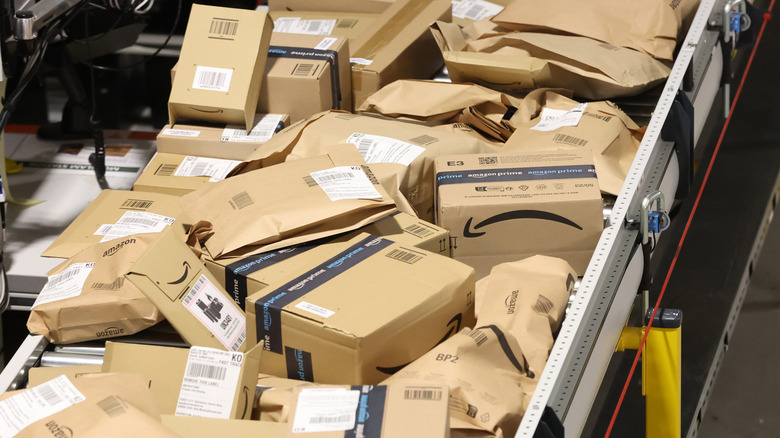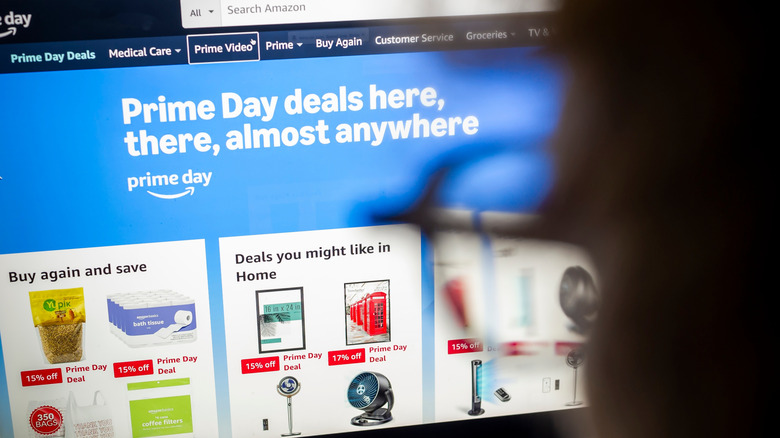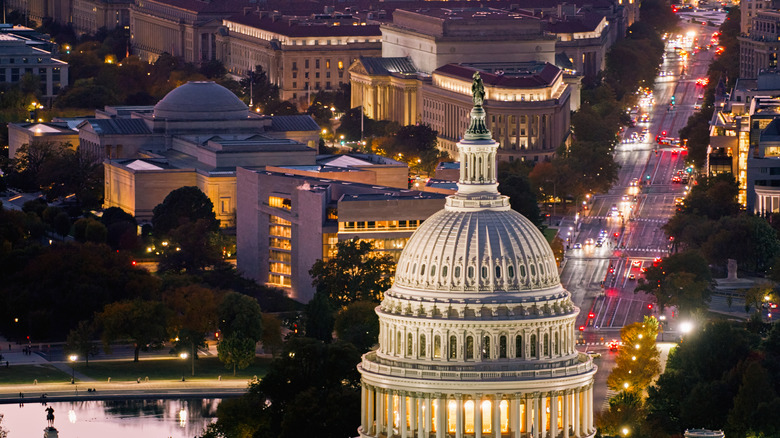Who Is Eligible For Amazon Prime's $2.5 Billion Settlement?
Just days into a case that was expected to last a month, Amazon has settled a lawsuit to the tune of $2.5 billion. The Federal Trade Commission (FTC) sued Amazon in 2023, and brought its civil case against the online retailer to court in late September 2025. The FTC sued Amazon for tricking people into paying for Amazon Prime subscription services with deceptive tactics, as well as making it extremely difficult to cancel those services.
The perks of an Amazon Prime subscription cost $14.99 per month — or $139 per year — which many people willingly pay. However, millions of people were tricked into paying fees for "free" two-day shipping and other Amazon Prime deals. Now, per the settlement and the FTC's final order, Amazon will pay a $1 billion civil fee and $1.5 billion in refunds to deceived customers.
Amazon has not made any admission of guilt for its actions, though representatives have advised that the existing subscription process is in line with the FTC's terms. Despite the vast sums Amazon will pay, those unwitting subscribers interested in claiming a portion of that landmark $1.5 billion in refunds may ultimately be hindered by eligibility requirements, the steps they must take to make a claim, and the maximum amount of repayment they are due. Even for those who are eligible, this settlement might not change their minds about whether Amazon Prime is actually worth the subscription cost.
Eligibility and steps to make a claim
35 million consumers are eligible to make a claim for some of Amazon Prime's massive $1.5 billion restitution fees. However, any eligible claimant is capped at receiving a maximum repayment of up to $51, depending on how much in membership fees were initially paid. Some consumers will be considered automatically eligible to receive payment, while others will need to file a claim with Amazon. A claims page will be made on Amazon's website, as well as the company's app pages. These pages have not yet been made available as of late September.
Per the settlement, Amazon Prime consumers who enrolled during any 12-month period between June 2019 and June 2025 and used three Prime services or fewer in that time period are automatically eligible for a refund from Amazon, paid automatically within 90 days of the FTC order. For those who used Prime a maximum of 10 times over the course of a year of enrollment between June 2019 and June 2025, or tried unsuccessfully to cancel services during that period, a claims process will be made available. Claims will be settled after the initial automatic payments are made.
If Amazon runs out of settlement funds after issuing automatic repayments, payments for unintentional enrollees, and payments for those who could not successfully cancel, they will pay on a pro rata basis, still capping any refunds at a maximum of $51. Impacted consumers should monitor Amazon for claim information pages, as well as look for any direct emails or letters from Amazon.
Additional lawsuit and criticism of settlement
The swift settlement should seem like a big win for the FTC, especially considering that the civil case is a frontrunner to the big antitrust lawsuit the FTC is bringing against Amazon in 2027. However, some critics sense trouble.
Alvaro Bedoya, a former FTC commissioner, posted an extended critique on X highlighting how Amazon officials internally referred to the cancellation click-maze as the Homeric "Iliad" due to its confusing design, and questioned why the FTC suddenly settled after major wins against Amazon. Bedoya wondered: "What pressure did the White House put on this FTC to enter into this settlement? What communications were there? This doesn't smell right." Former FTC Chair Lina Khan shared Bedoya's post, as well. Other economic advocacy groups have also brought up the "Click-to-Cancel" rule, that would make unsubscribing from pricey subscriptions as simple as signing up for them. This rule was blocked by a judge in July 2025, but the rule is a usual hotpoint in conversation between money-hungry companies and those fighting for consumer welfare.
The knowing nature of deception may not sit well with most consumers, regardless of questions or settlement fees. The Amazon documents that outline internal knowledge of the deceptive tactics used to lure customers include comments that make it appear as if Amazon team members were aware that what they were doing was wrong. Americans lose a terrifying amount of money to scams every year, and might not realize some of those scammers may be their go-to service providers.


